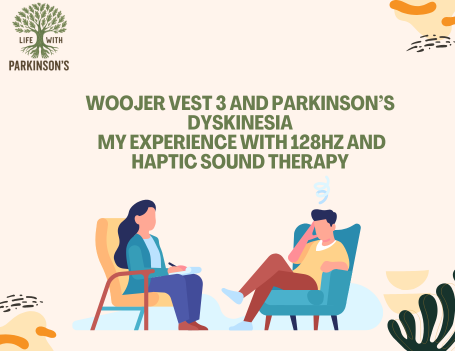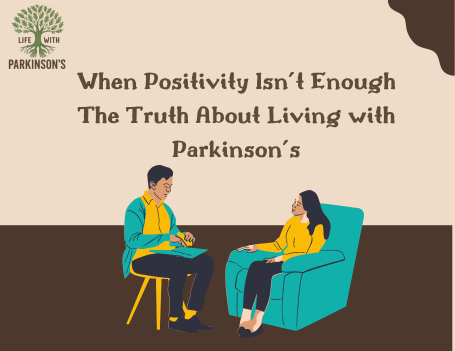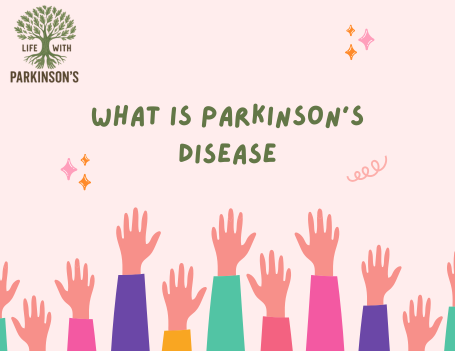Today I want to share something close to my heart: how sound therapy and tuning forks have helped me as a person living with Parkinson’s. First, I need to send a huge thank-you to SOMA Energetics for their unwavering support of the Parkinson’s community. They’ve been a beacon in the sound healing world since 1999, serving over 50,000 customers worldwide with integrity and care. SOMA is a small, family-run business (just two full-time owners and a couple of helpers) based in the U.S., and they manufacture their tuning forks to very high standards.
In fact, their customers rave about the quality: over 96% of reviews are five stars, and people often say SOMA treats them like family.
For example, SOMA emphasizes that “quality, precision, and performance” are core to every fork they craft. They’ve been in business over two decades and rarely see returns because the products are so well made. They even back their forks with a 60-day return policy if you’re unsatisfied – which shows their confidence in what they sell. In short, I’ve found SOMA’s forks to be built like tanks and beautifully tuned. Knowing the people behind them really care about healing (not just selling) makes me trust their tools even more.
As a person dealing with Parkinson’s, having trustworthy tools is huge. I’m grateful SOMA stands behind a satisfaction guarantee and honest service. Their support is especially meaningful because sound therapy is still an alternative approach, and knowing a respected company covers new users with a fair return policy makes it easier to try. In this journey, I’ve relied on SOMA’s high-grade tuning forks not just for their sound, but because I feel like SOMA’s part of my team, supporting my healing journey.
What Are Tuning Forks and Energy Field Harmonization?
You might be wondering: what exactly are tuning forks and how do they help? Tuning forks are U-shaped metal tools that, when struck, produce a pure sound at a specific frequency. For example, SOMA’s 4096 Hz Crystal fork rings at 4096 cycles per second. Because it’s lightweight and precise, its tone is bright and clear.
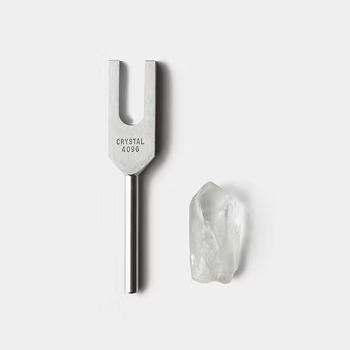
These sounds do more than just soothe. Every part of our body has its own natural vibration. When a tuning fork is used near or on the body, it encourages those systems to align with the fork’s tone—this is resonance. It can calm the nervous system and help restore balance, especially useful for relaxation, stress relief, and emotional clarity.
In Energy Field Harmonization, practitioners move tuning forks around the body’s energy field. Changes in sound can indicate stuck energy or tension. By holding the fork there, they help that area return to a more balanced frequency.
This process, while gentle, has helped me manage symptoms like anxiety and restlessness—reminding my body how to feel calm again.
How I Use SOMA’s Tuning Forks for Parkinson’s Symptoms
Over the past months, I’ve tried many forks in the SOMA catalog and used them during different situations. Two major challenges for me have been dyskinesia (those involuntary movements) and insomnia. I’ve found that specific forks can help address each issue. Let me share some of my personal stories.
Finding Calm During Dyskinesia with the Otto 128 Hz Fork
One evening not long ago, I was experiencing a bad bout of dyskinesia. My limbs were jerkier than usual, making it hard to sit still. I sat on my couch and decided to test something new: SOMA’s Otto 128 Hz tuning fork. (In case you’re wondering, the Otto forks are heavier, weighted forks designed to be used on or near the body.) The photo below shows the Otto 128 (the lower fork) next to an OM 136.1 Hz fork (the top one):
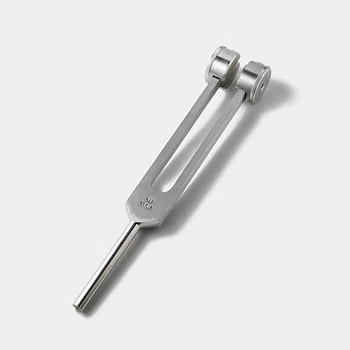
Figure: The OM 136.1 Hz tuning fork (top) and the Otto 128 Hz tuning fork (bottom) from SOMA Energetics. The Otto 128 is a weighted fork I often use for body work, especially when addressing symptoms of Parkinson’s.
I had struck the Otto 128 against the palm of my hand and then gently placed the base of the fork against my sternum and spine (with permission from my doctor to try this on the body). I also swept it along my arms. Instantly, the room was filled with a deep, rich hum. For the first minute, I just listened and felt. Then something remarkable happened: the intense waves of dyskinesia in my hands and arms began to synchronize with the fork’s rhythm. The jerky motions didn’t vanish immediately, but they slowed down and got more regular.
It felt like the heavy vibration of the fork was “leading” my muscles into a slower beat.
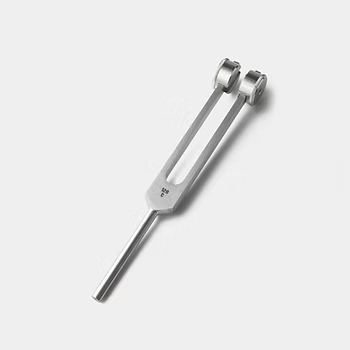
Within about five minutes of using the Otto 128 in this way, I noticed a clear reduction in the shaking. It wasn’t magic – I could still feel movement – but it had a steadier, calmer quality. It was the first time I really felt that a tuning fork could co-regulate my body’s movements. I was amazed. My wife saw the change, too – she said my hands started to look almost steady again, and I could relax a bit.
This experience wasn’t an isolated fluke. On other tough days, whenever I feel the dyskinesia ramping up, I reach for the Otto 128. I strike it (so it vibrates a lot) and then hold it on different parts of my upper body – like the forehead, chest, or even my quads. Each time, I feel the vibration resonate through me. After a few minutes, I almost always feel physically more grounded and mentally less anxious. My legs feel like they can respond more normally instead of convulsing randomly, and I can focus on slow breathing.
Special Offer: If you’d like to try SOMA’s tuning forks yourself, you can use my exclusive promo code LIFE10 at checkout to get 10% off your order.
Click here to visit SOMA Energetics – your purchase also helps support my ongoing work and outreach through Life with Parkinson’s. Thank you!
I tell people: the Otto 128 has become one of my most trusted tools. Because Parkinson’s medication (like levodopa) can sometimes cause dyskinesia as a side effect, I like having a natural, gentle way to counterbalance that. And again, I have to credit SOMA here: the Otto fork is really well made – heavy, sturdy, and tuned exactly as promised. It holds its vibration nicely, which I think is crucial. A dull or wobbly fork wouldn’t have the same effect.
Striking the Right Tone for Sleep: The Pineal Gland and Other Forks
Another big issue for me has been sleep. Parkinson’s can mess with your circadian rhythm and make it hard to fall or stay asleep. I discovered that some specific forks can invite sleepiness and deeper rest. My favorite sleep-aid is the Pineal Gland 480 Hz fork. The pineal gland is the part of our brain that regulates melatonin (the sleep hormone), and this fork’s gentle low frequency is intended to resonate with that system.
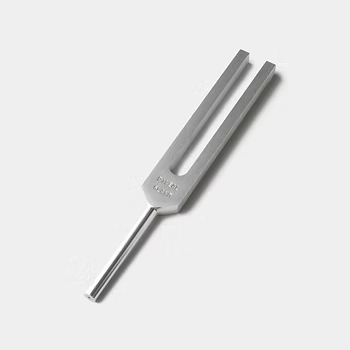
Each night, I do a short “sound ritual” before bed. I might start by lighting a candle, sitting quietly, and using SOMA’s 4096 Hz crystal fork (see above) to set a peaceful intention. The 4096 Hz fork is extremely high-pitched, and when I strike it, I feel its clarity and brightness almost like a cleansing wave. I’ll move it gently around my head and body for about a minute – it feels a bit like being bathed in a silvery light. This helps clear away any mental clutter or stress from the day. (For me, it works almost like saying a quiet prayer or meditation, but with sound vibrations.)
After that, I grab the pineal 480 Hz fork. I strike it once, hold it at my chest, and then move it up towards my forehead (near the crown, where the pineal gland is). I do a few gentle sweeps above my head and around my neck. Immediately, that deep hum fills the room. I keep my eyes closed and breathe deeply, letting the sound wash over me. In maybe 10–15 minutes, I begin to feel warm and heavy – a good sign I’m ready for sleep. My partner has noticed the difference too: some nights she hears the fork and says I sound like I’ve relaxed significantly even before going to bed.
The results have been encouraging. On nights when I do this routine, I wake up feeling more rested and clear-headed. On nights I skip it, I tend to toss and turn more, and I can tell I’m more foggy in the morning. I use the word “trick” loosely, but it really is like a gentle cue to my brain: “Hey, it’s time to wind down.” The pineal fork’s low vibration seems to rock my system into a slower mode. It reminds me of how people sometimes use low-frequency binaural beats or gentle rain sounds to fall asleep; this is the same idea, but with a physical instrument.
Another fork I use for calm and balance (especially during meditation) is the OM 136.1 Hz fork (seen above in the photo with the Otto). OM is considered a universal chanting sound in many traditions, and this fork carries that resonance. When I feel overstressed or my mind is racing (which can happen a lot if I worry about Parkinson’s symptoms), I’ll strike the OM fork and just let the warmth of its tone ground me. Often I hold it at my heart or third eye and breathe in time with the vibration. It instantly makes my busy brain slow down.
Beyond those, I’ve tried others too: SOMA’s MI 528 Hz fork (for love and healing), their angelic A# 432 Hz fork, and even specialized ones like the “Earth” 136.1 Hz (almost identical to the OM) or the Fibonacci tuning forks. Each has its own unique character. I won’t list them all here, but the key point is: because SOMA offers such a wide range, I’ve been able to build a personalized toolkit. Some I use daily, some weekly, but every time I feel something off – whether it’s pain, brain fog, or emotional stress – I think, “Which fork might help right now?”
In all these experiences, the pattern is consistent: careful, respectful use of the forks tends to create space for the body to heal and balance itself. The science I mentioned earlier suggests sound can stimulate biological processes (like circulation, cell repair, even immune function) and modulate stress responses. Practitioners often speak about “detox” or emotional release in tuning sessions. I’ve certainly had moments after a tuning session where I feel like a weight lifted or even tear up unexpectedly – I just take that as the energy doing what it needs to do. The overall feeling, though, is always one of being more present, more at ease, and more in charge of my health (which is incredibly empowering when living with a chronic condition).
Medical Disclaimer
I want to be completely honest and transparent: I’m not a doctor or therapist. I’m just sharing my journey and what has worked for me with Parkinson’s. Sound therapy is complementary, not a cure, and individual experiences vary widely. My approach is what I consider safe and gentle – I always start with the lowest intensity (light strikes, no force) and pay attention to how my body responds. I also coordinate with my neurologist and physical therapist, so nothing here replaces professional medical advice or treatment.
Before you try anything new (especially if you have health issues), please consult a qualified healthcare provider. Tuning forks should not be used on certain sensitive areas (like open wounds, or directly over the eyes), and if something ever feels wrong or makes a symptom worse, stop and get expert help. The tips I’m giving are from my own experimenting, published practitioner advice, and a bit of common sense. I include this disclaimer because I care about you – and I’d hate for anyone to misunderstand this as medical advice. Think of it more as shared wisdom from one friend to another, encouraging you to explore safely.
A Guide for Caregivers and Supporters
If you’re here reading this, you might be a caregiver, family member, or friend of someone with Parkinson’s. I want to include a bit for you because your role is so important. Caring for a loved one with Parkinson’s can be challenging, and having practical tips can make a big difference for both of you.
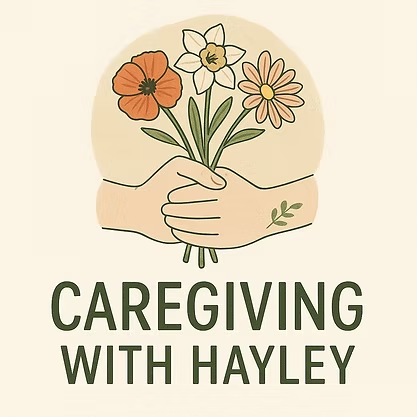
First, educate yourself about Parkinson’s. Experts say it’s crucial for caregivers to learn as much as they can about the disease and its progression. Reliable resources include Parkinson’s foundations or medical centers. The more you understand tremors, dyskinesia, medication schedules, non-motor symptoms (like mood or sleep changes), the better you’ll both cope. This also means staying patient and flexible – every day can be different. On some days your loved one may be able to do a lot on their own; on other days, even simple tasks can be hard. Encourage independence whenever possible (even small wins like them buttoning a shirt), and remember that frustration can happen.
Communication is key. Johns Hopkins advises keeping an open dialogue and treating the patient as a partner, not just someone who needs care. Talk together about what assistance is needed. Ask your loved one how they feel and what they need help with. Sometimes they may not admit they’re struggling, so gently offer to accompany them to doctor appointments or therapy sessions. When you do go together, take notes on medication changes, symptom fluctuations, sleep issues, mood changes – doctors appreciate that extra information. Even the little details (like “They were more rigid in the morning but better after lunch”) can help fine-tune care.
Stay organized with schedules and meds. Parkinson’s patients often have complex medication regimens timed to control symptoms. A missed pill can make a “good day” suddenly very difficult. Hopkins experts stress making sure medications are taken correctly and on time. As a caregiver, you might set reminders or use a big wall calendar where both of you mark doses, appointments, and notes about how they felt. Simple tools (phone alarms, pill organizers) can prevent mistakes.
Take care of yourself, too. It sounds obvious, but often caregivers forget to recharge their own batteries. Your loved one’s well-being is tied to yours. Find a support network – even online groups or local Parkinson’s support meetings can be a lifesaver. When you’re rested and supported, you can be more patient and effective. Things like a quick walk, meditation, or even listening to soothing music (or, heck, trying tuning forks yourself!) can help you reset.
Finally, remember that sound therapy can be a shared experience. If you feel comfortable, join in a tuning session with your loved one. It can be as simple as holding the other end of the fork gently to their body while they hold or listen to the tone. Shared rituals like this can strengthen your connection and show them you’re actively trying to help. And if they respond well to it, you might even learn and use some forks for your stress relief – because caregiving is hard work. It’s a journey you’re on together.
Take the Next Step
I hope my story and these tips resonate with you. Sound healing is something that’s given me hope and a sense of control in the face of Parkinson’s. It won’t replace medicine, but it adds a dimension of self-care that truly feels holistic and empowering. If you feel drawn to explore this, remember that SOMA Energetics offers a broad range of forks and even a 10% discount if you use our promo code LIFE10 – Click here for this special offer.
If you’re curious, I encourage you to watch my full YouTube video “Can Energy Field Harmonization ease insomnia and dyskinesia?” where I show some of these techniques in action and talk more about what I’ve experienced. You can find it here (embedding below).
Whether you’re living with Parkinson’s or caring for someone who is, know that you’re not alone. There are tools, communities, and treatments (both conventional and alternative) out there to help. SOMA Energetics has become one of my trusted allies because of their integrity and quality. I’m grateful to be able to share their support with you through this blog. Here’s to experimenting safely, staying hopeful, and lifting each other up with sound, compassion, and science.
Note of Appreciation
SOMA Energetics is one of the generous sponsors helping support our mission to explore holistic approaches to Parkinson’s wellness. While this post reflects my personal experience and opinions, I’m grateful for their role in making this conversation possible.
Sources & References
- Personal Experience:Reflections and practices shared in this post are based on my lived experience with Parkinson’s and personal use of sound therapy and tuning forks over time.
- SOMA Energetics – Product Information & Company Background:
- SOMA Energetics Official Website
- Details on tuning fork quality, return policies, customer reviews, and manufacturing standards gathered from various product and info pages on https://somaenergetics.com?ref=223.
- Sound Therapy & Energy field harmonization Concepts:
- Willow Grove Wellness – Educational content on tuning forks, frequency healing, and vibrational medicine.
- Articles from these sites helped explain concepts like energetic blockages, entrainment, vibrational healing, and somatic tuning in plain language.
- Medical & Caregiver Guidance – Parkinson’s Disease:
- Johns Hopkins Medicine – Parkinson’s Caregiver Tips
- Referenced guidance includes communication strategies, medication scheduling, and caregiver well-being tips based on best practices for chronic neurological conditions.

